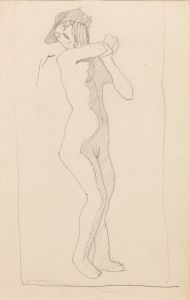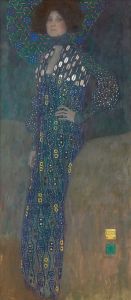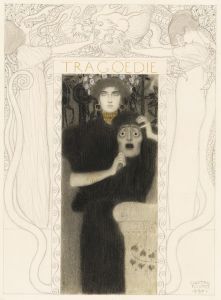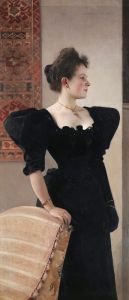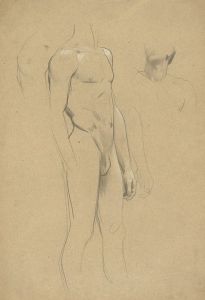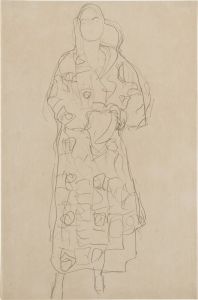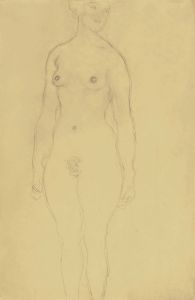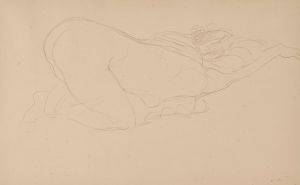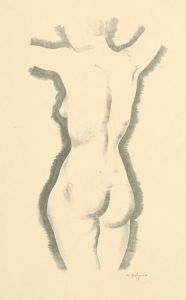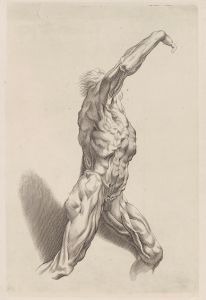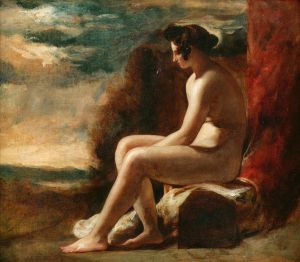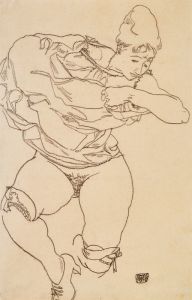
Standing female nude
A hand-painted replica of Gustav Klimt’s masterpiece Standing female nude, meticulously crafted by professional artists to capture the true essence of the original. Each piece is created with museum-quality canvas and rare mineral pigments, carefully painted by experienced artists with delicate brushstrokes and rich, layered colors to perfectly recreate the texture of the original artwork. Unlike machine-printed reproductions, this hand-painted version brings the painting to life, infused with the artist’s emotions and skill in every stroke. Whether for personal collection or home decoration, it instantly elevates the artistic atmosphere of any space.
"Standing Female Nude" is a drawing by the renowned Austrian symbolist painter Gustav Klimt. Known for his distinctive style that combines symbolic subject matter with a highly decorative aesthetic, Klimt's works often explore themes of the female form, eroticism, and the cycle of life and death. This particular drawing is a testament to his fascination with the female body and his skill in capturing its form with minimal yet expressive lines.
Gustav Klimt was born on July 14, 1862, in Baumgarten, near Vienna, Austria. He was a prominent figure in the Vienna Secession movement, which sought to break away from the traditional academic art of the time and embrace a more modern and experimental approach. Klimt's work is characterized by its use of symbolism, intricate patterns, and a focus on the sensual and the erotic.
The drawing "Standing Female Nude" is part of Klimt's extensive collection of studies and sketches that he produced throughout his career. These drawings were often preparatory works for his larger paintings, allowing him to explore different poses, compositions, and details. Klimt's drawings are highly regarded for their fluidity and the way they capture the essence of the human form with economy and grace.
In "Standing Female Nude," Klimt employs a delicate yet confident line to depict the contours of the female body. The drawing showcases his ability to convey movement and emotion with minimal detail. The figure is rendered with a sense of naturalism, yet there is an underlying abstraction that is typical of Klimt's style. The simplicity of the drawing highlights Klimt's mastery of form and his deep understanding of anatomy.
Klimt's approach to the female nude was both innovative and controversial. During his time, depictions of the nude were often idealized and sanitized, but Klimt's work presented a more honest and sometimes provocative portrayal. His nudes are celebrated for their sensuality and their ability to convey a range of emotions, from vulnerability to strength.
The drawing reflects Klimt's interest in the interplay between the human figure and decorative elements. While "Standing Female Nude" is a more straightforward study of the human form, it hints at the elaborate patterns and textures that would often surround his figures in his paintings. This focus on decoration and pattern is a hallmark of Klimt's work and is evident in his most famous paintings, such as "The Kiss" and "Portrait of Adele Bloch-Bauer I."
Klimt's influence on the art world is significant, and his exploration of the female form has inspired countless artists. His work continues to be celebrated for its beauty, its innovation, and its ability to capture the complexity of human emotion and experience.
"Standing Female Nude" is a fine example of Klimt's draftsmanship and his ability to convey the beauty and complexity of the human form with simplicity and elegance. It remains an important piece within his body of work, illustrating his ongoing fascination with the female figure and his contribution to the development of modern art.





